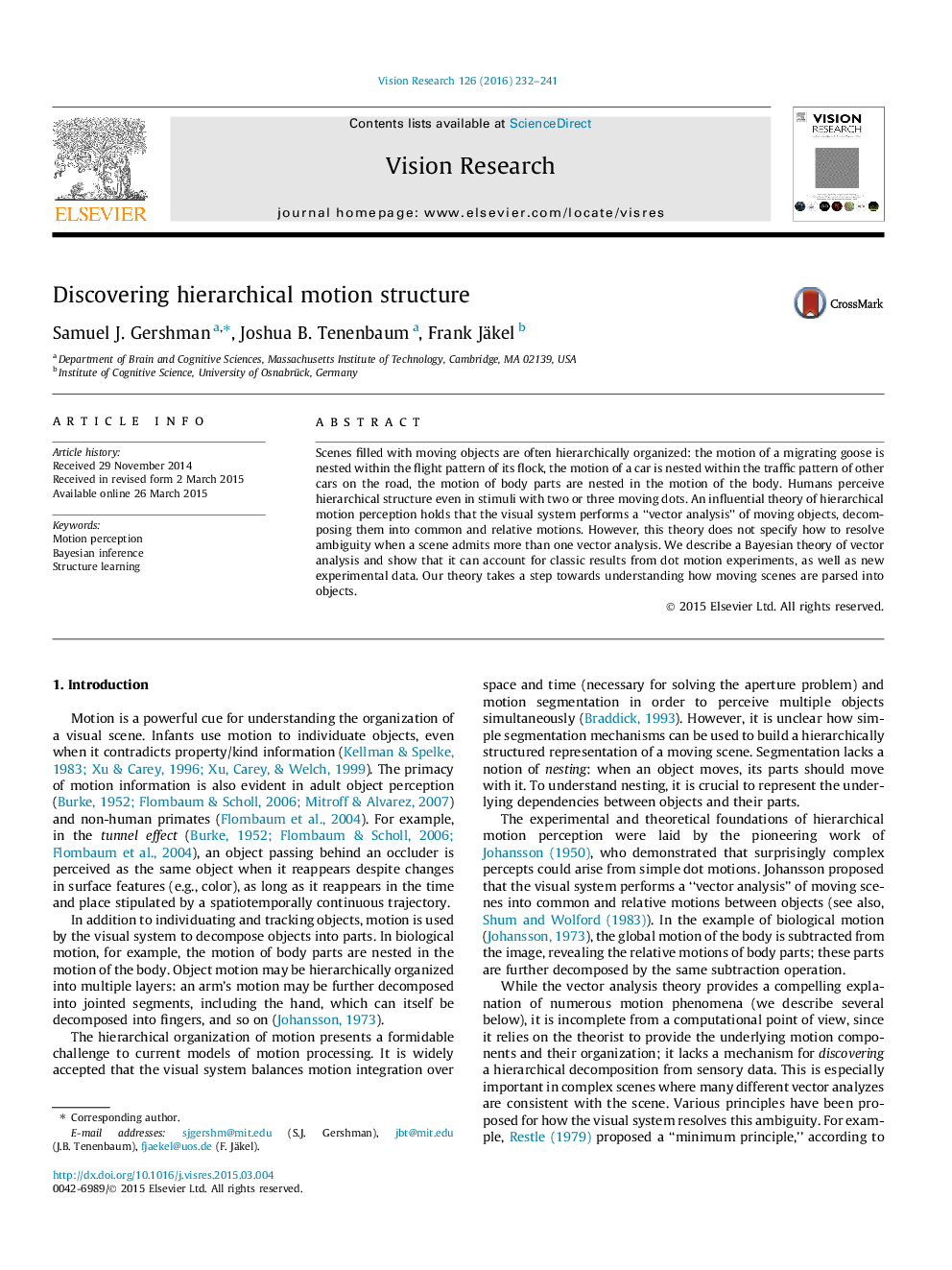| Article ID | Journal | Published Year | Pages | File Type |
|---|---|---|---|---|
| 6202928 | Vision Research | 2016 | 10 Pages |
â¢A theory of hierarchical motion perception is presented.â¢The theory captures a wide range of phenomena, including reference frame effects, biological motion, and transparent motion.â¢A new experiment shows that the theory can predict human judgments of motion structure very accurately.
Scenes filled with moving objects are often hierarchically organized: the motion of a migrating goose is nested within the flight pattern of its flock, the motion of a car is nested within the traffic pattern of other cars on the road, the motion of body parts are nested in the motion of the body. Humans perceive hierarchical structure even in stimuli with two or three moving dots. An influential theory of hierarchical motion perception holds that the visual system performs a “vector analysis” of moving objects, decomposing them into common and relative motions. However, this theory does not specify how to resolve ambiguity when a scene admits more than one vector analysis. We describe a Bayesian theory of vector analysis and show that it can account for classic results from dot motion experiments, as well as new experimental data. Our theory takes a step towards understanding how moving scenes are parsed into objects.
